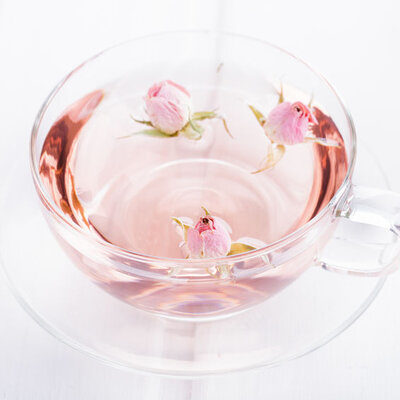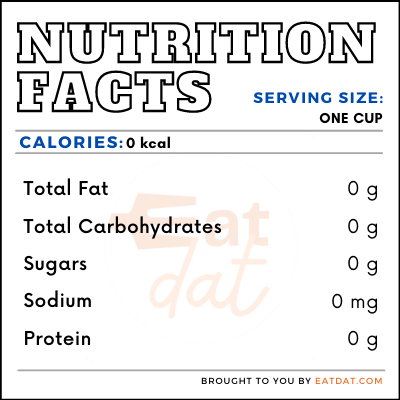
Rose Tea
What is Rose Tea?
Rose tea is a beverage made with the petals and buds of rose flowers. Although is not actually a tea, but an herbal concoction, which is caffeine-free and can be drunk hot or cold. There are hundreds of rose cultivars and all of them are edible; however, some are better suited to making this than others.
- The darker the rose variety, the stronger the flavor.
- This tea may also be blended with green or black tea to craft a fragrant caffeine-based tea.
The top 10 best tea blend brands are:
- The Tao of Tea
- Lazy Daze
- Art of Tea
- Plum Deluxe
- Vahdam Teas
- Dian Hong
- Teabox
- Buddha Teas
Origin of rose tea
Both tea and roses originated in China. This tea also has its origin in Chinese cuisine. An infusion of unopened young rosebuds was made in ancient China as a medicine to help digestion and keep the skin supple. When tea reached Persia in the 17th century, it also gave rise to a type of tea made with rose petals. Today, this tea is popular around the world.
Nutrition
The nutritional value for one cup of rose tea:

Rose petals are rich in phenols, which contain antioxidants. They also contain complex carbohydrates, iron, and magnesium in high quantities. Caffeine-free rose tea is a good hydrating drink, although this tea may sometimes be consumed with black or green tea.
Tea offers plenty of antioxidants because of its levels of polyphenols. Evidence suggests that incidence of certain types of cancer is lower among tea drinkers. The antioxidants in tea also help in combating gum disease and the fluoride present in these leaves can help keep teeth strong. Furthermore, tea has flavonoids, which provide antioxidant effects. However, both black and green tea consumption must be limited due to their caffeine content.
Commercial production
Most commercial productions involve drying fresh rose petals and buds before packaging them. These petals may also be mixed with green or black tea. This is one of the most popular commercial teas in the world, alongside jasmine, Osmanthus, orchid, and lychee.
Rose tea recipes
This tea can be made at home with just rose petals and buds, water, and an optional sweetener. First, remove the rose petals from the flower one by one and rinse them under cold water to clean them. Then, dry them in the sun for storage and later use, or immediately make a brew. To brew tea, place 1 cup water to 1 tablespoon rose petals in a saucepan and heat until the petals darken. Strain and add your sweetener of choice.
Here are some other varieties of rose tea:
- Rose Milktea
- Rose Masala Chai
- Black Tea
- Rose Iced Tea
- Hibiscus Rose Latte
- Rose Bubble Milktea
- Falooda Indian Rose Drink
- Matcha Rose Latte
- Kashmiri Chai Boba
- Gulkand Chai
- Rooibos Rose Latte
- Baklava with Rose Water
FDA regulations
The FDA classifies rose petals and rose buds under substances generally recognized as safe. They are considered a natural extractive and are approved for their intended use.
References
Compendium of Guidelines for Herbal and Fruit Infusions, Tea and Herbal Infusions Europe , https://www.thie-online.eu/fileadmin/inhalte/Publications/HFI/2018/2018-07-17_Compendium_of_Guidelines_for_Herbal_Infusions_-_ISSUE_6.pdf
Yakov Vinokur, Victor Rodov, Natalie Reznick, Genady Goldman, Batia Horev, Nakdimon Umiel, Haya Friedman, Rose Petal Tea as an Antioxidant-rich Beverage: Cultivar Effects, Journal of Food Science, May 2006, doi:10.1111/j.1365-2621.2006.tb12404.x, https://onlinelibrary.wiley.com/doi/abs/10.1111/j.1365-2621.2006.tb12404.x
Vijayanchali, S. S., Nutrient, Phytonutrient and Antioxidant Activity of the Dried Rose Petals (October 17, 2017). Journal of Research, Extension and Development, Vol. 6, No. 2, October 2017, https://papers.ssrn.com/sol3/papers.cfm?abstract_id=3345537
Stradley, Linda. “Edible Flowers Chart.” Whatscookingamerica.net, What’s Cooking America, 4 Aug. 2019, whatscookingamerica.net/EdibleFlowers/EdibleFlowersMain.htm.
